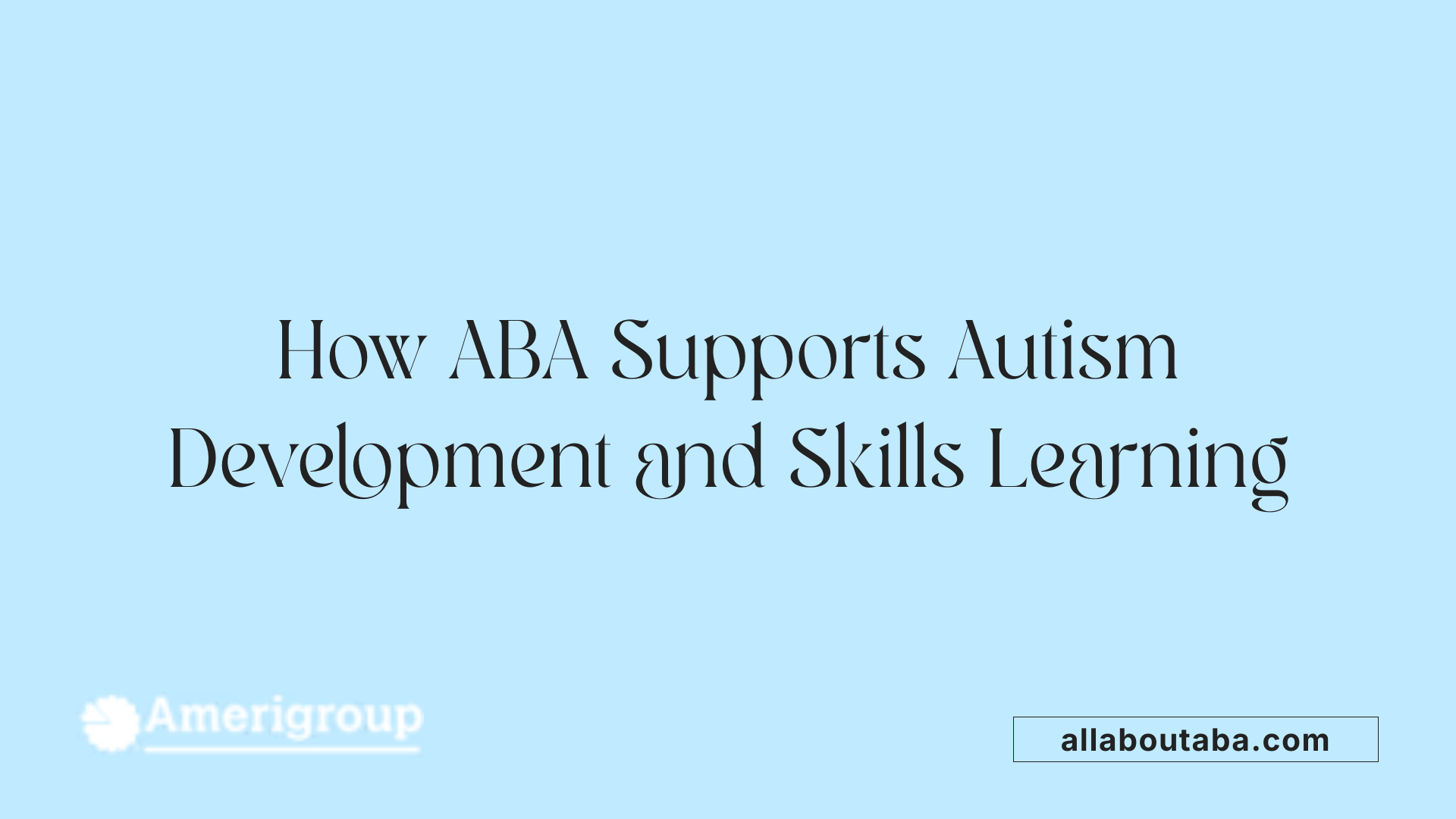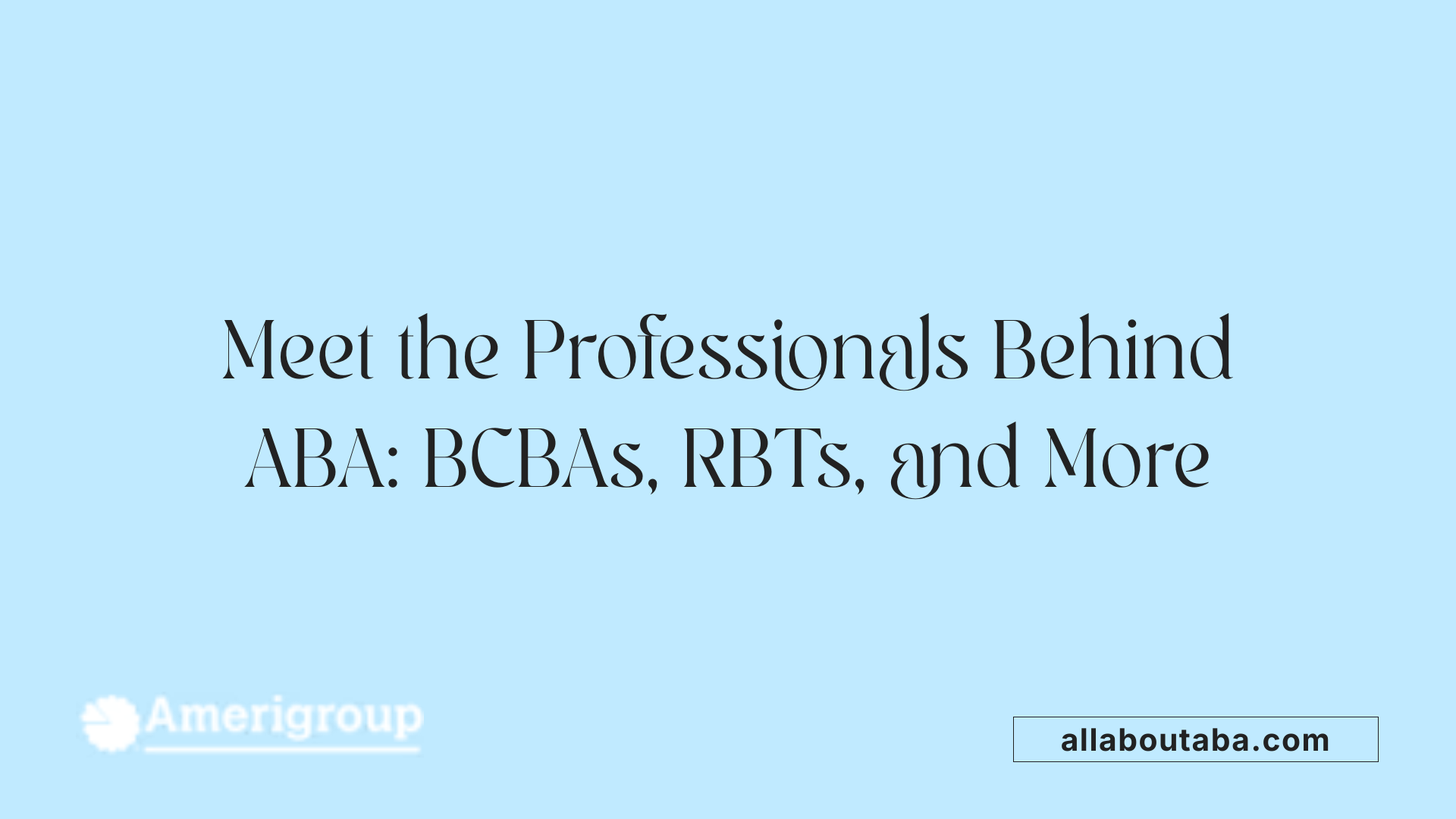Understanding Noncontingent Reinforcement In Autism Behavior Plans
Introduction to Reinforcement in ABA Therapy
Applied Behavior Analysis (ABA) therapy is a cornerstone intervention for individuals with autism spectrum disorder (ASD). Central to its effectiveness are reinforcement strategies that increase desirable behaviors and reduce problematic ones. This article explores the nuanced concept of noncontingent reinforcement (NCR), a less commonly understood but valuable tool in autism behavior plans, contrasting it with contingent reinforcement and illuminating its benefits, limitations, and clinical considerations within ABA therapy.
What Is Applied Behavior Analysis (ABA) Therapy?

What is Applied Behavior Analysis (ABA) therapy?
Applied Behavior Analysis, or ABA, is a science-based therapy that uses principles derived from operant conditioning to improve behaviors and teach new skills. It emphasizes increasing beneficial behaviors like communication, social interaction, and academic abilities, while reducing harmful or challenging behaviors. ABA therapy is widely used for individuals with autism spectrum disorder (ASD) and other developmental conditions.
Foundational principles including operant conditioning
ABA is rooted in the work of B.F. Skinner, focusing on operant conditioning—the process of modifying behavior through consequences like reinforcement or punishment. Reinforcement, particularly positive reinforcement where a behavior is followed by a rewarding stimulus, is key to increasing desired behaviors.
ABA’s focus on skill acquisition and behavior reduction
The therapy aims to shape behaviors by systematically reinforcing targeted skills and decreasing undesirable actions through methods like differential reinforcement. It helps individuals learn adaptive skills necessary for daily life and reduces behaviors that interfere with learning or socialization.
Techniques used in ABA
Popular ABA techniques include Discrete Trial Training (breaking down skills into small tasks), Pivotal Response Treatment (targeting pivotal areas of development), and methods involving task analysis, prompting, fading, and functional behavior assessments. These individualized interventions are adaptable based on client needs.
Settings for ABA delivery
ABA can be delivered in homes, schools, clinics, or community environments. Sessions often involve one-on-one work between therapists and clients, with goals tailored to personal abilities and circumstances.
Scientific grounding and effectiveness
ABA has extensive empirical support demonstrating its effectiveness in teaching skills and reducing challenging behaviors. It is recognized as an evidence-based best practice by health organizations worldwide and is supported by ongoing research.
Qualifications of providers
ABA therapy is administered by trained professionals, including Board Certified Behavior Analysts (BCBAs) who design and oversee programs, and Registered Behavior Technicians (RBTs) who implement therapy plans. These practitioners follow ethical guidelines and continuously monitor progress through data collection.
The Use of ABA Therapy in Autism Treatment

How is ABA therapy used in treating autism?
ABA therapy is a scientifically based treatment designed to help individuals with autism develop essential skills and reduce challenging behaviors by applying principles of behavior within environmental contexts.
Individualized skill development in ABA
Treatment begins with thorough assessments by certified behavior analysts to identify each individual's strengths, needs, and goals. This information guides personalized plans aimed at teaching communication, social interaction, academic abilities, and daily living skills.
Breaking down complex behaviors
ABA breaks down complex skills into smaller, manageable components. Each step is taught systematically using reinforcement strategies to encourage learning and retention.
Personalized assessments and treatment planning
Behavior analysts conduct functional behavior assessments, preference assessments, and skill evaluations to tailor interventions effectively for each client.
Common ABA techniques such as Discrete Trial Training and Early Start Denver Model
Discrete Trial Training (DTT) uses structured teaching with clear instructions and immediate reinforcement. The Early Start Denver Model (ESDM) integrates ABA within play-based interactions to promote engagement and natural learning.
Settings for ABA implementation
ABA can be delivered across multiple environments including homes, schools, and community settings, ensuring skills are generalized and functional.
Benefits of early, intensive intervention
Starting ABA early and providing consistent, intensive therapy has been linked to improved developmental outcomes and greater independence in individuals with autism.
Respecting neurodiversity in treatment
Modern ABA approaches emphasize respecting the individual's neurodiversity, focusing on empowerment and positive support to improve quality of life rather than enforcing conformity.
ABA therapy continues to evolve with research supporting its effectiveness in fostering meaningful skill development and behavior management tailored to each person.
Who Provides ABA Therapy Services?

Roles and Qualifications of ABA Providers
ABA therapy services are delivered by professionals trained in behavioral analysis, with varying levels of certification and responsibility.
Board Certified Behavior Analysts (BCBAs)
BCBAs are highly trained professionals who design, oversee, and evaluate individualized treatment plans. They hold advanced certifications and lead the clinical decision-making process.
Board Certified Assistant Behavior Analysts (BCaBAs)
BCaBAs assist BCBAs by implementing treatment strategies under supervision. They have foundational certification and help in both assessment and intervention phases.
Registered Behavior Technicians (RBTs)
RBTs work directly with clients, implementing behavior plans and collecting data on progress. They are supervised by BCBAs or BCaBAs and focus on hands-on execution of ABA techniques.
Role of Paraprofessionals
Paraprofessionals may assist in service delivery under the guidance of certified behavior analysts or technicians, often supporting daily activities and reinforcing skills.
Service Delivery Settings
ABA services occur in a variety of environments including homes, schools, clinics, and community settings, ensuring interventions meet individual needs across contexts.
Fundamentals of Reinforcement in ABA Therapy

What Are Operant Conditioning and Reinforcement in ABA?
ABA therapy is grounded in operant conditioning, a learning process identified by B.F. Skinner. This process explains how behaviors can be shaped by their consequences. Reinforcement, a central concept in this theory, involves consequences that increase the likelihood of a behavior occurring again.
Positive and Negative Reinforcement
In ABA, reinforcement is used to encourage desirable behaviors. Positive reinforcement adds a pleasant stimulus after a behavior, such as giving praise or a sticker. Negative reinforcement removes an aversive stimulus, like ending a loud noise when a correct behavior occurs. Both methods aim to increase the occurrence of targeted behaviors.
What Are Schedules of Reinforcement?
Reinforcement can be delivered according to different schedules, which influence how often and when reinforcement is given. Common schedules include:
- Fixed ratio: Reinforcement after a set number of responses.
- Variable ratio: Reinforcement after a variable number of responses.
- Fixed interval: Reinforcement after a fixed amount of time.
- Variable interval: Reinforcement after varying time intervals.
These schedules help in maintaining and strengthening behaviors over time.
What Is Contingent Reinforcement? Examples?
Contingent reinforcement occurs only after a specific behavior is performed. For example, a child might receive a sticker after completing their math problems. This method depends on clear expectations and consistent consequences tied directly to the behavior, effectively encouraging skill acquisition.
What Is Noncontingent Reinforcement? Examples?
Noncontingent reinforcement (NCR) involves providing reinforcement independently of any particular behavior, usually on a preset schedule. Examples include scheduled sensory breaks or free playtime given regardless of the child's actions. NCR can help reset mood and reduce challenging behaviors by offering breaks or pleasurable experiences without requiring specific behaviors.
How Does Reinforcement Shape Behavior?
Reinforcement is key in ABA therapy to increase desirable behaviors and reduce undesired ones. By controlling the consequences of behavior, therapists can precisely shape and teach new skills. Reinforcement techniques are carefully selected based on individual motivation and therapeutic goals.
What Are Differential Reinforcement Techniques?
Differential reinforcement involves reinforcing specific desired behaviors while withholding reinforcement for others. Types include:
- DRA (Differential Reinforcement of Alternative Behavior): Reinforces a positive alternative to an undesired behavior.
- DRI (Differential Reinforcement of Incompatible Behavior): Reinforces behaviors incompatible with the target negative behavior.
- DRO (Differential Reinforcement of Other Behavior): Reinforces any behavior except the unwanted one.
- DRL (Differential Reinforcement of Low Rates): Reinforces reduced rates of a behavior.
These strategies are widely used to promote adaptive behaviors, especially in autism spectrum disorder treatment.
Understanding Noncontingent Reinforcement (NCR)

What Is Noncontingent Reinforcement (NCR)?
Noncontingent reinforcement is a behavioral technique where rewards or reinforcers are given independently of any specific behavior. Unlike contingent reinforcement, which delivers a reward only after a targeted behavior occurs, NCR provides reinforcement on a fixed schedule regardless of what the individual does.
How Does NCR Differ from Contingent Reinforcement?
Contingent reinforcement hinges on a clear connection between behavior and reward — for example, receiving a sticker only after completing a set of math problems. NCR, in contrast, offers reinforcers noncontingently, such as scheduled breaks or sensory activities, often provided without any direct link to immediate behavior.
Examples of NCR in Practice
Common instances of NCR include scheduled sensory breaks or free playtime during therapy or classroom sessions. These reinforcers are delivered at predetermined times, independent of any particular task or behavior performance.
Purpose and Effects of NCR
One of the primary goals of NCR is to help reduce challenging behaviors by offering unearned access to pleasurable stimuli or breaks, which can help reset mood and decrease frustration. This approach can especially benefit individuals who might engage in repetitive or stereotypic behaviors as a way to self-soothe.
Use of NCR for Stereotypic Behavior in Autism
In autism therapy, NCR has been employed to reduce stereotypic or repetitive behaviors. However, some research indicates that NCR might sometimes be less effective, especially if combined with other treatments like response blocking. There can be variations in how NCR influences behaviors such as manding (making requests), with some individuals showing reduced motivation to communicate when NCR is implemented.
Potential Limitations and Contraindications
While NCR can be helpful, it is not without limitations. It may interfere with learning new skills since the reinforcement is not tied to specific behaviors. Additionally, its use may, in some cases, intensify stereotypic behavior rather than reduce it. Careful assessment and individualized planning are crucial before incorporating NCR into a behavior intervention plan.
Benefits and Challenges of Using NCR in Autism Behavior Plans
How NCR Can Reduce Persistent Challenging Behaviors
Noncontingent reinforcement (NCR) provides reinforcement on a fixed schedule regardless of behavior, which can help reset mood and reduce challenging behaviors in individuals with autism. It is often used to decrease stereotypic behaviors by delivering sensory breaks or pleasurable activities without requiring specific responses.
Effects on Manding (Requesting) Behaviors
Research indicates that NCR may reduce manding, or requesting behavior, for alternative preferred items. In studies, most participants showed fewer requests when NCR was in place, suggesting it might unintentionally diminish motivation to communicate needs.
Interaction with Other Interventions Like Response Blocking
Combining NCR with response blocking to manage stereotypic behavior has shown mixed effects. Studies found that persistence of stereotypy was highest when NCR was paired with response blocking and lowest when NCR was used alone. This interaction highlights the importance of carefully selecting combined interventions.
Risks of NCR Weakening Acquisition of New Skills
While NCR can reduce undesirable behaviors, it may interfere with learning new skills or strengthen stereotypy if overused. Providing reinforcement independent of behavior can reduce the individual's opportunity or motivation to engage in skill acquisition or functional communication.
Balancing NCR With Skill Development Goals
Selecting between NCR and contingent reinforcement should depend on the individual's needs and therapy goals. Balancing NCR's mood-resetting benefits with the need for skill development involves careful planning to ensure reinforcement supports both behavior reduction and learning.
Research Findings on NCR Effectiveness and Limitations
Although NCR is effective for some behavior challenges, research underscores its limitations, including potential reduction in manding and possible intensification of stereotypies when combined with other treatments. Ongoing studies aim to better understand how to optimize NCR use within comprehensive ABA therapy plans for autism.
Differential Reinforcement Strategies Complementing NCR
What Are the Different Types of Differential Reinforcement?
Differential reinforcement includes several techniques designed to increase desirable behaviors while reducing undesired ones. These types are:
- DRA (Differential Reinforcement of Alternative Behavior): Reinforces a positive substitute behavior to replace the negative one.
- DRI (Differential Reinforcement of Incompatible Behavior): Encourages behaviors that cannot occur simultaneously with the undesired behavior (e.g., playing with a toy instead of hitting).
- DRO (Differential Reinforcement of Other Behavior): Rewards any behavior other than the problematic one when a specific alternative has not been identified.
- DRL (Differential Reinforcement of Low Rates): Reinforces a behavior occurring less frequently, aiming to reduce its rate but not eliminate it.
How Does Differential Reinforcement Increase Desirable Behaviors?
By selectively reinforcing chosen behaviors, these strategies shape an individual's actions toward more adaptive and functional responses. For example, DRA and DRI promote skill acquisition by encouraging new or incompatible behaviors, effectively reducing the occurrence of challenging behaviors through reinforcement rather than punishment.
What Role Does Differential Reinforcement Play in Teaching Replacement Behaviors?
Differential reinforcement techniques help individuals learn acceptable alternatives to problematic behaviors. Rather than simply trying to eliminate a behavior, these methods teach a positive or incompatible action, which increases the likelihood of adopting socially appropriate patterns. This is especially effective in autism therapy, where new communication or task-related skills are targeted.
How Does Differential Reinforcement Compare With Noncontingent Reinforcement?
While noncontingent reinforcement (NCR) delivers reinforcement independent of behavior, aiming primarily to reduce challenging behaviors and reset mood, differential reinforcement ties the reward directly to desired or alternative behaviors. NCR can reduce unwanted behaviors passively, but may sometimes interfere with new skill acquisition or even maintain stereotypy if not carefully implemented.
How Are Differential Reinforcement and NCR Integrated in Therapy?
ABA therapy often blends differential reinforcement techniques with NCR to optimize behavior management. NCR can provide scheduled boosts to mood and reduce immediate challenging behaviors, while differential reinforcement shapes the learning of replacement or desirable behaviors. Thoughtful integration depends on the individual's needs, treatment goals, and the specific context, ensuring both methods complement one another to support lasting behavioral improvements.
Ethical Considerations and Contemporary Responses in ABA
Historical criticisms of ABA therapy
Applied Behavior Analysis (ABA) has faced notable criticism regarding ethical concerns, especially given its historical use of aversive techniques. Critics have highlighted potential harm, questioning the morality of some interventions and raising concerns about the treatment of individuals with autism.
Concerns related to ethics and neurodiversity
A significant area of debate centers on how ABA addresses neurodiversity and the potential for encouraging masking of authentic behaviors. These concerns emphasize the need for sensitivity to individual differences and respect for the natural variation in neurological profiles.
Misconceptions regarding abuse and aversives
Some arguments suggest ABA is inherently abusive due to its past methods. However, recent expert responses clarify that this view lacks substantial evidence, as modern ABA practices have extensively moved away from aversive procedures towards more positive, reinforcement-based approaches.
Reform efforts and ethical improvements in ABA practice
Contemporary reform efforts in ABA focus on improving ethical standards, promoting respectful and individualized care, and integrating feedback from neurodiversity advocates. These initiatives aim to foster acceptance while maintaining effective behavioral support.
Fostering empowerment and optimism in treatment
Modern ABA emphasizes empowerment and optimism, encouraging meaningful skill development and quality of life improvements. This approach prioritizes client dignity and promotes motivation through positive reinforcement strategies.
Importance of individualized, respectful care
Choosing appropriate reinforcement methods depends on individual motivation, targeted behaviors, and therapeutic goals. Ethical ABA practice prioritizes tailoring interventions respectfully to each person’s needs, ensuring compassionate and effective support.
Selecting Reinforcement Strategies to Optimize Autism Behavior Plans
How is reinforcement individualized based on motivation and therapy goals?
Effective ABA therapy starts with understanding individual motivation and specific treatment goals. Functional Behavior Assessments (FBAs) are essential tools that identify what triggers and maintains behaviors, allowing therapists to select reinforcers that truly motivate each individual. By selecting reinforcers aligned with personal preferences, therapists ensure that reinforcement effectively encourages desired behaviors.
When should contingent or noncontingent reinforcement be used?
Contingent reinforcement provides rewards only after a specific behavior occurs, making it ideal for skill acquisition and encouraging new behaviors through clear expectations. For example, giving a sticker after completing math problems links the reinforcement directly to the targeted action.
Noncontingent reinforcement (NCR) delivers reinforcement on a fixed schedule regardless of behavior. This approach is useful for reducing challenging behaviors and improving mood by providing unearned breaks or pleasurable activities, such as scheduled sensory breaks.
Why are functional behavioral assessments important in selecting reinforcement?
FBAs offer detailed insights into behavioral functions and environmental influences. This information guides therapists in choosing either contingent or noncontingent reinforcement based on what will best support learning while minimizing unwanted behaviors.
How can schedules and types of reinforcers be tailored?
ABA uses various reinforcement schedules like fixed ratio or variable interval to control frequency and timing, which can be adjusted dynamically depending on progress and context. Reinforcers can be positive (adding a preferred stimulus) or negative (removing an unpleasant stimulus), both strategically applied to increase target behaviors.
How is reinforcement integrated with other ABA methods?
Reinforcement often works in concert with techniques such as differential reinforcement (e.g., reinforcing alternative or incompatible behaviors), task analysis, prompting, and fading. This integration helps build comprehensive, individualized behavior support plans.
How is effectiveness monitored and plans adjusted?
Therapists continuously assess progress through data collection and observations. If a reinforcement strategy shows limited effects or unintended consequences—like NCR potentially reducing communication behaviors—it is modified. This dynamic approach ensures interventions remain responsive and effective.
| Strategy Aspect | Description | Practical Example |
|---|---|---|
| Individual Motivation | Tailoring reinforcers using preference assessments based on specific interests | Using preferred toys or snacks |
| Contingent Reinforcement | Reinforcement given only after behavior; promotes skill acquisition | Sticker after math task completion |
| Noncontingent Reinforcement | Reinforcement provided independent of behavior; reduces challenging behavior | Fixed sensory breaks during therapy sessions |
| Functional Behavioral Assessment | Identifies behavior triggers and functions; guides reinforcement choice | Analyzing behavior to determine most effective reinforcement |
| Reinforcement Schedules | Adjusting timing and frequency to maintain motivation and learning | Switching from continuous to variable ratio schedule |
| Integration with ABA Techniques | Combining reinforcement with prompting, fading, and differential reinforcement | Reinforcing playing quietly instead of hitting |
| Monitoring and Adjustment | Ongoing data collection to adapt reinforcement strategies | Modifying NCR approach if communication decreases |
Conclusion: Integrating Noncontingent Reinforcement in Effective Autism Therapy
Noncontingent reinforcement represents a nuanced and valuable reinforcement strategy within the broader context of ABA therapy for autism. While traditional contingent reinforcement remains foundational due to its direct link to behavior change and skill acquisition, NCR offers distinct benefits in mood regulation and reducing challenging behaviors, especially stereotypy. Its use requires careful consideration of individual needs, therapy goals, and potential interactions with other treatment components. By thoughtfully combining NCR with differential reinforcement techniques and other ABA strategies — and by being responsive to ethical considerations and ongoing research findings — therapists can develop comprehensive, respectful, and effective behavior plans that enhance quality of life and learning outcomes for individuals with autism.
References
Other articles
Recent articles

Best Practices For Telehealth Autism Therapy

How To Help Autistic Children Develop Friendship Skills

How Schools Can Support Autistic Students In Career Prep

Best Strategies For Autism-Friendly Event Planning

Understanding Noncontingent Reinforcement In Autism Behavior Plans

How Drama Therapy Benefits Autistic Individuals

Best Practices For Autism-Friendly Fitness And Recreation Centers

Best Ways To Promote Healthy Social Media Use For Autistic Teens

How To Help Autistic Children Cope With Public Speaking

Autism And Strategies For Managing Unexpected Changes

Best Podcasts About Autism For Parents And Educators

Autism And The Impact Of Seasonal Changes On Behavior

The Role Of Diet In Managing Co-Occurring Conditions With Autism

Sleep Challenges In Autism And Practical Solutions

Best Ways To Build Daily Routines For Autistic Children

Best Practices For Supporting Autistic Entrepreneurs

Autism And Strategies For Navigating Large Social Gatherings

Adaptive Sports And Recreational Activities For People With Autism

Autism And The Benefits Of Story-Based Learning Activities

Understanding The Role Of Play In Autism Development

Autism And The Impact Of Environmental Noise On Learning

How To Create Autism-Friendly Community Spaces

Autism And Chronic Health Conditions: What To Know

The Role Of Care Managers In Autism Life Planning

How To Teach Social Boundaries To Autistic Children

How Autistic Individuals Experience Empathy Differently

How To Support Autistic Employees In Remote Work Settings

Autism And The Relationship Between Motor Skills And Learning

How To Create Community Resource Guides For Autism Families

How To Teach Daily Living Skills To Autistic Teens

Autism And The Impact Of Mind-Body Practices On Stress Reduction

Autism And The Benefits Of Outdoor Group Activities

How To Create Autism-Friendly Sensory Paths In Schools

Best Practices For Autism-Friendly Park And Recreation Areas

Autism And Strategies For Reducing School Refusal

Supporting Autistic Individuals In Public Speaking

The Role Of Diet In Managing Autism Symptoms

The Benefits Of Gardening Clubs For Autism Social Development

How To Prepare Autistic Children For Dental Visits

Autism And Employment: Career Paths That Work

Best Practices For Autism-Friendly Hotels And Lodging

The Impact Of Screen Time On Autism Development

Autism Screening Tools For Early Childhood

The Role Of Physical Exercise In Autism Therapy

Best Strategies For Supporting Autistic College Students

The Role Of Technology In Autism Early Detection

Sensory-Friendly Classroom Design Ideas For Autistic Students

The Role Of Speech Therapy In Building Social Communication Skills

Best Strategies For Handling Autistic Burnout In Adults

Autism And The Importance Of Predictability In Routine

Autism And Peer Education: Teaching Acceptance In Schools

Best Practices For Sensory-Friendly Libraries And Reading Rooms

Self-Advocacy Skills For Autistic Adults

The Role Of Technology In Autism Peer Communication

Promoting Physical Activity In Children With Autism

How To Prepare Autistic Children For Medical Procedures

The Role Of Social Media In Autism Advocacy And Awareness

The Impact Of Sensory Rooms In Public Facilities For Autism

How To Create An Autism-Friendly Holiday Celebration

Best Practices For Inclusive Education For Autistic Students

Autism And Mental Health: Recognizing Signs Of Distress

Best Practices For Sensory-Friendly Waiting Rooms

The Role Of Teachers In Early Autism Red Flag Identification

Autism-Friendly Housing Design Features

Autism-Friendly Housing Design Features

How Environmental Modifications Improve Autism Outcomes

Autism And Technology-Based Learning Tools

Supporting Autistic Children Through Changes In Routine

The Link Between Autism And Working Memory Challenges

Best Practices For Autism-Friendly Cooking Classes

Autism And The Benefits Of Structured Music Lessons

Best Books To Teach Kids About Autism Acceptance

Sensory Diets And Their Benefits For Autism Management

How To Prepare Autistic Teens For Driver’s Education

How To Teach Autistic Teens About Healthy Relationships

The Role Of Visual Prompts In Building Daily Habits For Autism

Addressing Sleep Regression In Children With Autism

Understanding Social Stories And How They Help Autistic Children

Navigating Insurance Coverage For Autism Therapy Services

How To Prepare Autistic Adults For Independent Travel

Supporting Autistic Individuals In Volunteer Work

How Mindfulness Practices Can Support Autism Well-Being

Understanding Hyperfocus And Special Interests In Autism

Understanding Stimming As A Self-Regulation Tool

Sensory-Based Interventions For Autism At Home

Best Ways To Introduce Self-Advocacy In Autistic Teens

Best Ways To Support Autistic Employees In Customer Service Roles

Best Practices For Autism-Friendly Volunteer Programs

Autism And The Benefits Of Sensory Play For Emotional Growth

Autism And Strategies For Building Peer Relationships

Understanding How Autism Affects Memory Processing

Autism And Strategies For Building Coping Skills In Teens

The Role Of Parent Training In Autism Intervention Programs

Autism-Friendly Workplace Accommodations

Using Visual Timers For Autism Time Management

What Is ABA Therapy?

Autism and Sleep

Do Plastic Toys Cause Autism?

Autism Facial Expressions

Autism and Motor Skills
We’re All About You, Your Family, and Your Child

